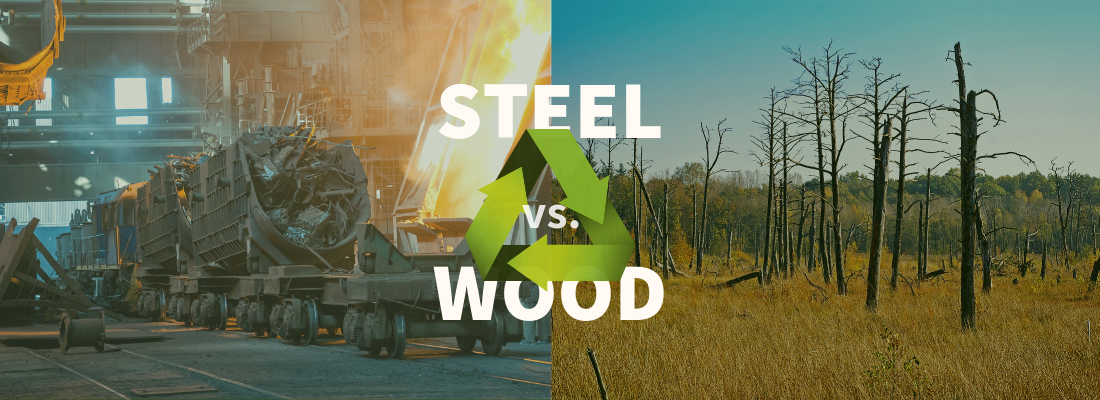According to certain “studies”, wood claims a smaller environmental footprint than any other major building material. However, a closer look at the facts reveal some significant inconsistencies with that claim.
A study cited often by the wood industry was published by the Consortium for Research on Renewable Industrial Materials (CORRIM) and is based on outdated information. For example, it made incorrect assumption about the quantity of steel needed of its comparisons.
MYTH: Studies demonstrate that wood is a more sustainable material than steel.
REALITY: The most-cited study contains numerous incorrect assumptions about steel, and it omitted wood impacts.
Wood is typically a single-use material. At the end of its life, a building’s wood frame is typically land filled or incinerated. This returns any stored carbon dioxide back into the atmosphere as either carbon dioxide or methane. shifting greenhouse gas burdens to future generations.
In comparison, steel is the world’s most recyclable material. Steel construction products have a recycling rate of more than 90 per cent. This means that at the end of a steel building’s life, more than 90 per cent of its steel is recycled into another steel product, using significantly less energy than was necessary to create the original product. A material that can be recycled continually over centuries with no loss in quality and that lowers the burden of future generations is the very definition of sustainability!
MYTH: Wood is more sustainable than steel because it is a renewable resource.
REALITY: Being renewable is not the same thing as being sustainable.
The wood industry claims that for every tree cut down, one or more new trees are planted. However, the claims does not take into account that it will take decades before those saplings mature. In the meantime, the forest is depleted of the oxygen, water storage and filtration, wildlife habitat, global cooling, and other benefits provided by the mature tree.
That said, trees are often harvested by clear-cutting, leaving large gaps in the forestland that also impact the plants and animal species left behind.
MYTH: Wood is more sustainable than steel because wood construction products store carbon.
REALITY: Carbon storage for wood construction products is only temporary, shifting the impacts to future generations.
Carbon is sequestered in the fiber of trees, but that does not mean that wood buildings become large reservoirs of carbon that is stored indefinitely. Upon harvesting, the unused root and leaf systems immediately return their CO2 to the atmosphere by decay. For wood products, the reality is that carbon storage is also temporary. CO2 is released back into the atmosphere at the end of the wood building’s life either by demolition and subsequent decay of the wood or by incineration.
As a result of wood waste and decomposition, the carbon stored long-term in harvested wood products may be a small proportion of that originally stored in the standing trees-across North America. Approximately only one per cent may actually remain in products that are in use, while 13 per cent are in landfills at 100 years post-harvest.
MYTH: All wood construction products are certified as being sustainably harvested.
REALITY: The majority of forests in the U.S. do not meet the wood industry’s own sustainable harvesting standards.
In fact, 81 per cent of forests in the United States are not certified. Only 11 per cent are certified by the Sustainable Forestry Initiative (SFI) and seven per cent are certified by the Forest Stewardship Council (FSC). Note: the sustainable harvest certification provided by the SFI has often been challenged as to whether it reaches the required threshold of sustainable forestry. That said, only seven per cent of the forestland in the United States reaches the threshold of being considered sustainably managed.










